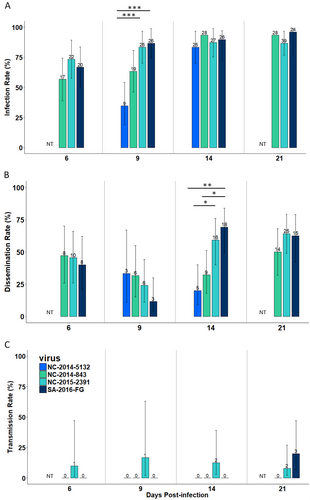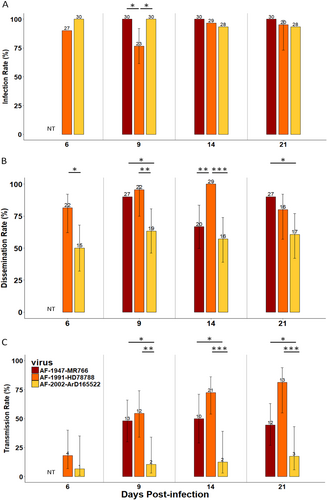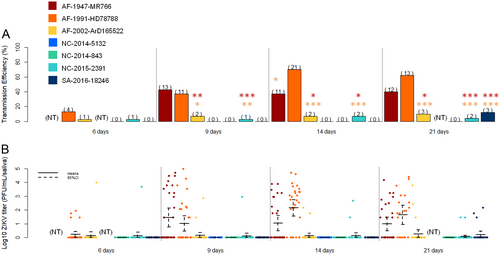Figures & data
Zika virus strains used in this study
Infection rate (a), dissemination rate (b) and transmission rate (c) at 6, 9, 14, and 21 days post-infection. The number of positive mosquitoes are indicated above each bar plot. Significant differences are indicated by asterisks (*p < 0.05; **p < 0.01; and ***p < 0.001). The bars indicate the 95% confidence interval for each ZIKV strain. NT indicates that females were not tested for this analysis point

Infection rate (a), dissemination rate (b) and transmission rate (c) at 6, 9, 14, and 21 days post-infection. The number of positive mosquitoes are indicated above each bar plot. Significant differences are indicated by asterisks (*p < 0.05, **p < 0.01, and ***p < 0.001). The bars indicate the 95% confidence interval for each ZIKV strain. NT indicates that females were not tested for this analysis point

a Transmission efficiency of ZIKV by NC Ae. aegypti at 6, 9, 14, and 21 days post-infection. The number of positive mosquitoes are indicated above each bar plot. Significant differences are indicated by asterisks (*p < 0.05, **p < 0.01, and ***p < 0.001), in red for differences with the strain AF-1947-MR766 and in orange for the differences with the strain AF-1991-HD78788. b Saliva viral loads of each ZIKV strain at 6, 9, 14, and 21 days post-infection. The bars indicate the confidence interval of the mean for each ZIKV strain

